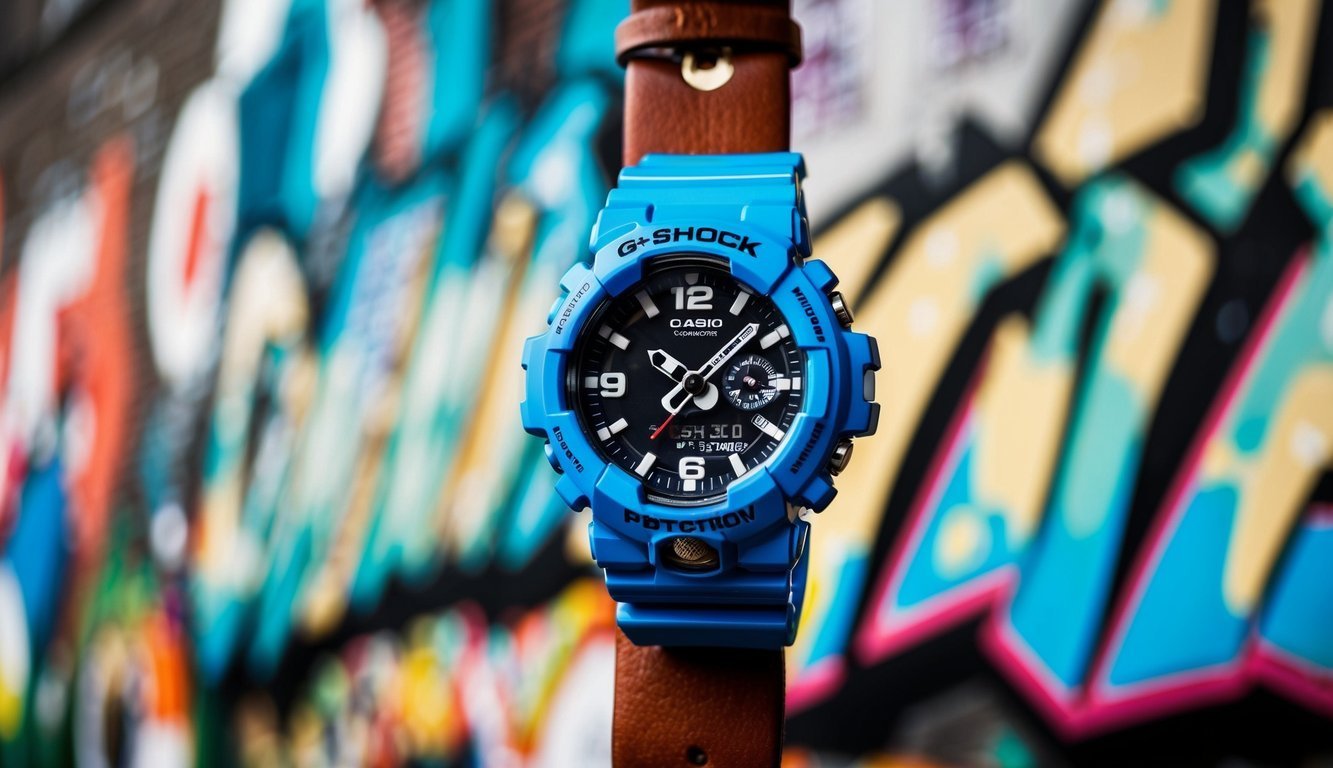When it comes to watches, few brands command as much universal respect as the Casio G-Shock.
Its acclaim cuts across not just dedicated watch lovers but reaches into broader cultural and consumer realms.
This may seem surprising, given that the G-Shock is a digital quartz watch—far removed from the meticulously crafted mechanical timepieces often celebrated by enthusiasts.
However, diving into its standout features reveals why the G-Shock has become a cornerstone in both horology and popular culture.
Pursuit of Toughness
The early 1980s were tumultuous for the watch industry, reeling from the shocks of the quartz crisis.
Esteemed brands struggled to stay afloat, with many either vanishing or barely surviving the upheaval.
Amidst this chaos, Casio distinguished itself.
The company had already made waves in the market with its earlier creation, the Casiotron, launched in 1974.
Yet, while quartz technology promised new possibilities, early digital watches often failed to deliver on durability—much like their mechanical counterparts.
This fragility became the catalyst for the G-Shock line’s creation.
The story begins with Kikuo Ibe, whose father’s beloved mechanical watch was accidentally damaged after a fall.
This incident ignited Ibe’s quest for a timepiece that could meet “triple ten” specifications: it needed to endure a 10-meter drop, run for ten years on a single battery, and resist water damage at depths of 10 bars.
Ibe then gathered a team of engineers affectionately dubbed “Team Tough” and embarked on a rigorous journey of experimentation, crafting numerous prototypes starting in 1981.
Their hard work culminated in the release of the DW-5000C in 1983, which became the first G-Shock.
This groundbreaking model introduced an innovative internal rubber module designed to absorb shocks like a bouncing ball.
Encased in urethane foam and protected by ten distinct layers—including a robust rubber bumper, a tough steel inner casing, and mineral glass for the LCD display—the design extended to its buttons and strap, all aimed at optimizing shock resilience.
Even today, the classic G-Shock impresses with its 200 meters of water resistance and remarkable durability, far exceeding its original benchmarks.
Marketing Genius and Cultural Relevance
The rise of the G-Shock to fame can be largely attributed to clever marketing strategies.
One standout advertisement featured a hockey player who, after misplacing a puck during a game, turned to the DW-5200C as an emergency substitute.
Initially, skepticism surrounded this claim, with critics arguing it was misleading.
However, local TV stations conducted their own tests, affirming the watch’s toughness.
This incident earned the G-Shock the nickname “Hero,” paving the way for an unexpected surge in popularity.
Initially aimed at construction workers in need of rugged watches, the G-Shock soon captured the eye of Millennials drawn to its unique style.
As demand grew for vibrant color options, the watches became a staple among skateboarders and other youth subcultures.
This transformation solidified the G-Shock’s presence in mainstream music and fashion.
The G-Shock Today
The current lineup of G-Shocks offers a wide variety of models, each showcasing a commitment to toughness while catering to diverse tastes.
Though it’s impossible to cover every version in detail, each iteration remains committed to exceeding the original “triple ten” specifications.
Over time, Casio has embraced technological advancements, integrating features such as tide graphs and radio-controlled time synchronization.
Recognizing the shift toward collaborative designs, Casio partnered with artists and brands to release exclusive G-Shock editions.
It’s no surprise that in September 2017, the company celebrated the sale of its 100 millionth G-Shock.
The watch continues to stand out for its robust construction, accessibility, and appeal among enthusiasts.
Given the vast array of G-Shock models, presenting them all in detail is impractical.
Nevertheless, several key iterations have left an indelible mark on the brand’s legacy.
The original DW-5000C holds a special place in history, while the Frogman model proudly claims the title of the first G-Shock to earn ISO 6425 certification as a dive watch.
The DW-6900-1V is another iconic design, and the MRG-100 heralded the launch of the premium MR-G series.
In essence, the Casio G-Shock embodies a fusion of resilience, innovative design, and an ability to adapt to the evolving landscape of watchmaking.
This remarkable timepiece cements its status not only as an icon in the watch industry but also as a celebrated figure in contemporary culture.
Source: Timeandtidewatches


